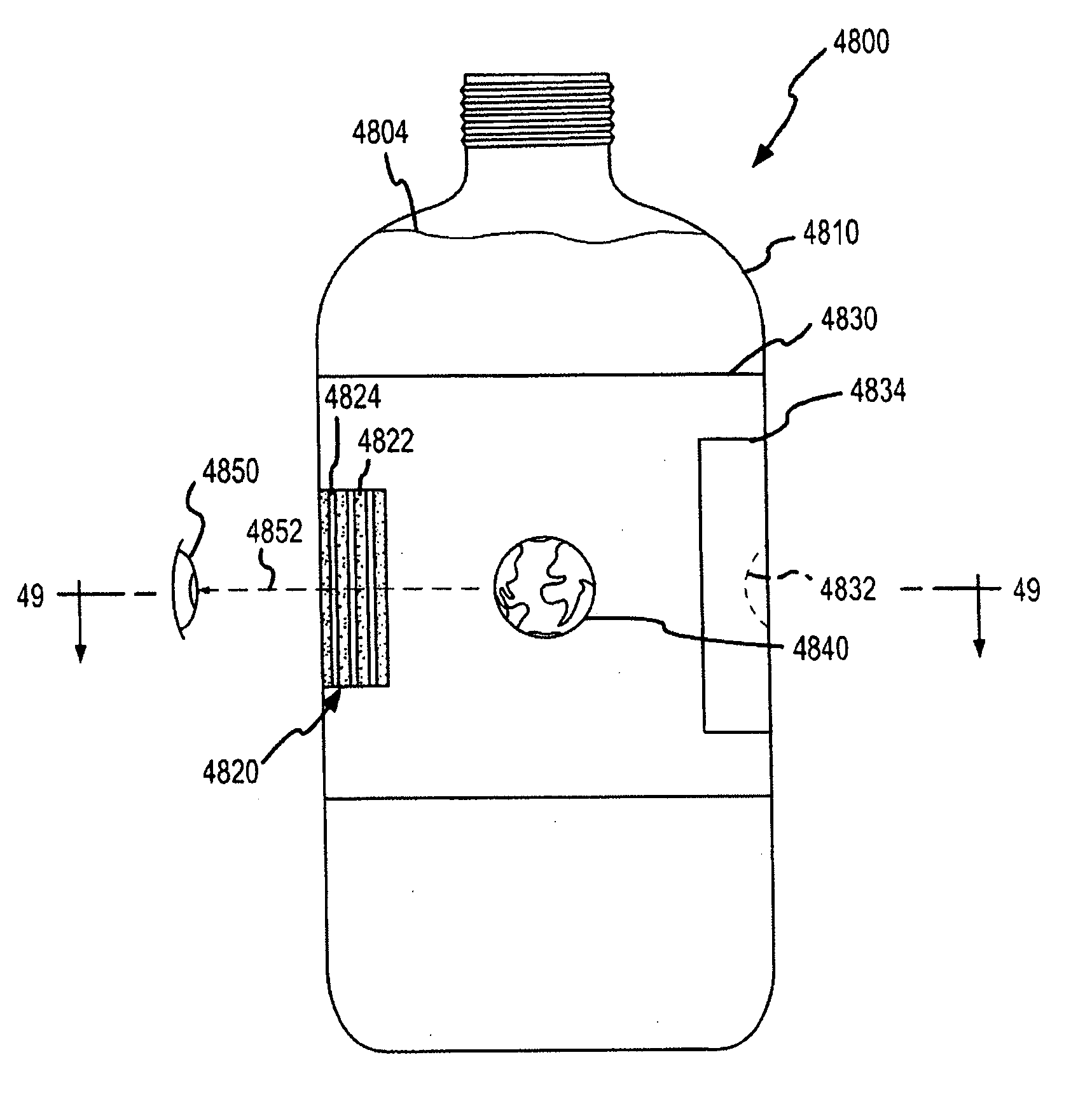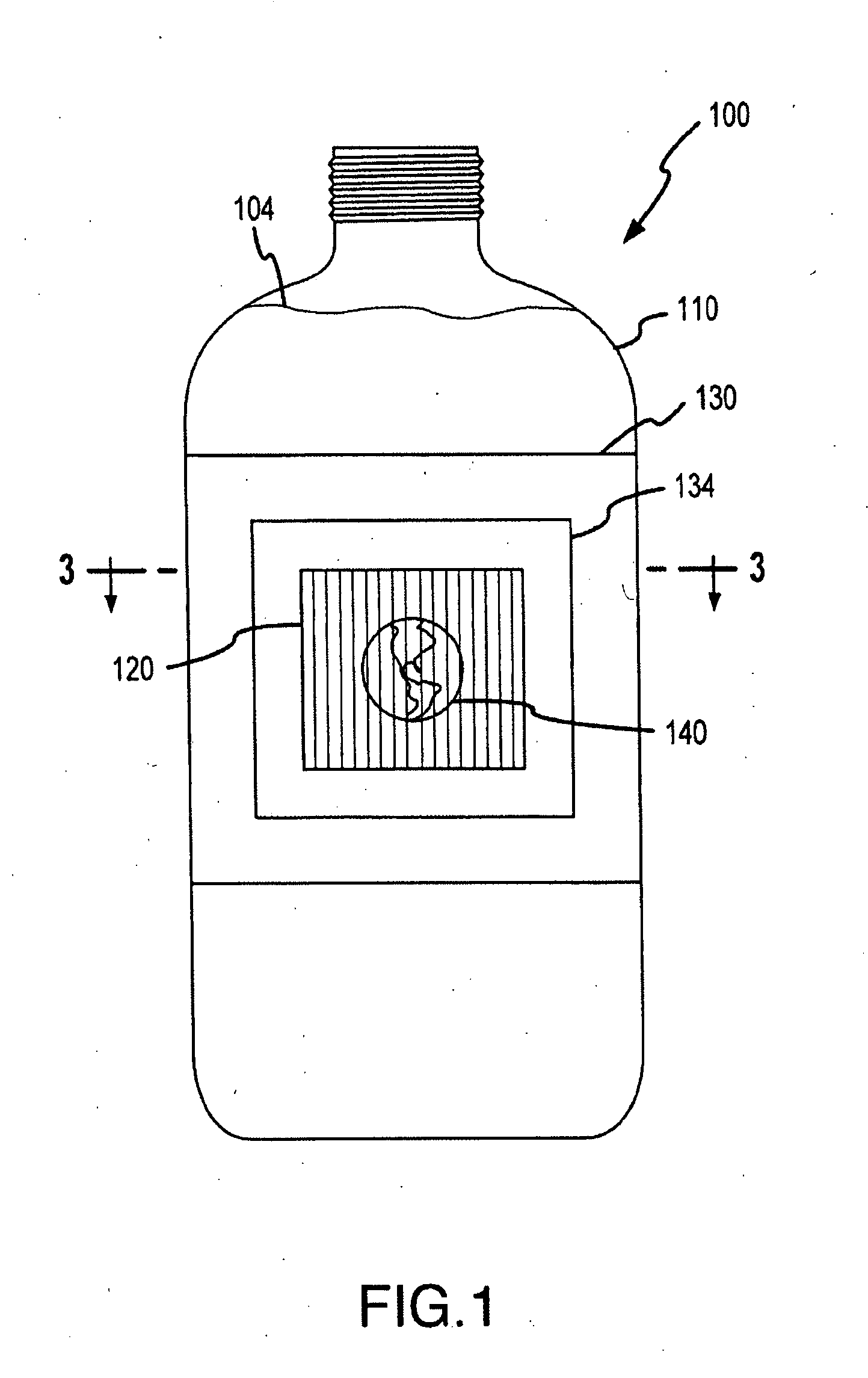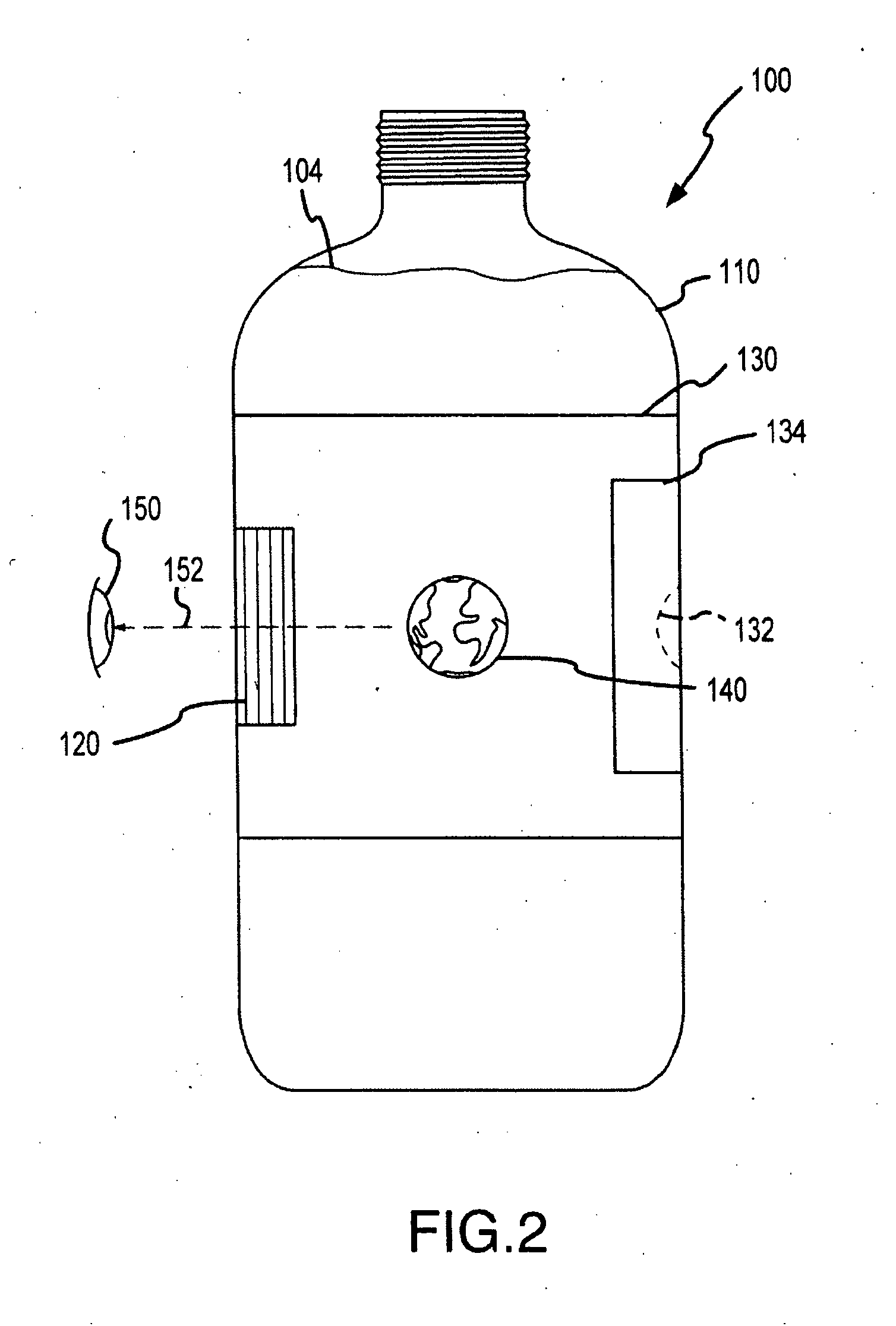Visual effect apparatus for displaying interlaced images using block out grids
a visual effect and grid technology, applied in the field of optical illusions and devices, can solve the problems of not being decals or other, and the thickness of the substrate is not generally useful or desirable for labels or other purposes, and achieve the effects of effective viewing interlaced images, facilitating focusing a powerful lens, and increasing the shelf appeal of products
- Summary
- Abstract
- Description
- Claims
- Application Information
AI Technical Summary
Benefits of technology
Problems solved by technology
Method used
Image
Examples
Embodiment Construction
[0070] Many of the embodiments described herein utilize a lenticular lens system or array in combination with a container's or object's sidewalls and contents to achieve desired optical effects with an interlaced image. In some cases, an air gap is created between a lens system, e.g., a lens array provided on a wraparound label, and an interlaced image. The present invention is also directed to providing an alternative way of displaying or allowing viewing of an interlaced image that does not require a lenticular lens array. Specifically, an alternative method of providing animation and 3D imagery with an interlaced image is to substitute a block out grid (or block out assembly or system) for the lenticular lens array or plurality of lenticular lenses. Block out grids typically are considered less useful or desirable than lenticular lens in producing optical effects and imagery. However, the combination of block out grids with the additional “lens” thickness or optical characteristi...
PUM
 Login to View More
Login to View More Abstract
Description
Claims
Application Information
 Login to View More
Login to View More - R&D
- Intellectual Property
- Life Sciences
- Materials
- Tech Scout
- Unparalleled Data Quality
- Higher Quality Content
- 60% Fewer Hallucinations
Browse by: Latest US Patents, China's latest patents, Technical Efficacy Thesaurus, Application Domain, Technology Topic, Popular Technical Reports.
© 2025 PatSnap. All rights reserved.Legal|Privacy policy|Modern Slavery Act Transparency Statement|Sitemap|About US| Contact US: help@patsnap.com



